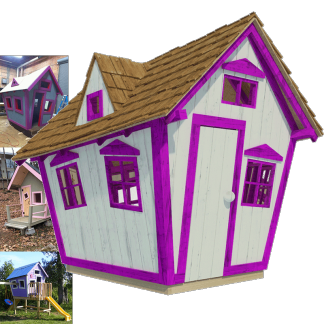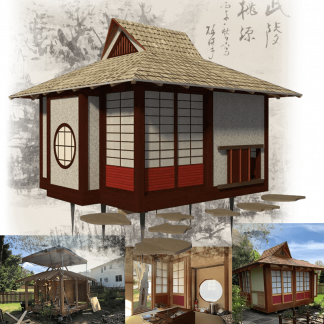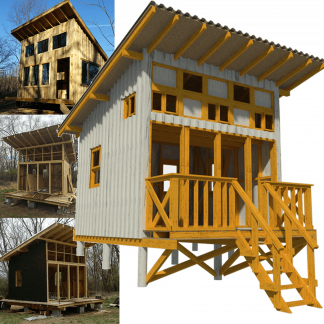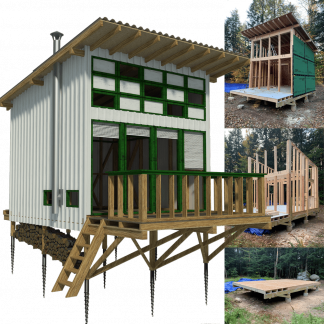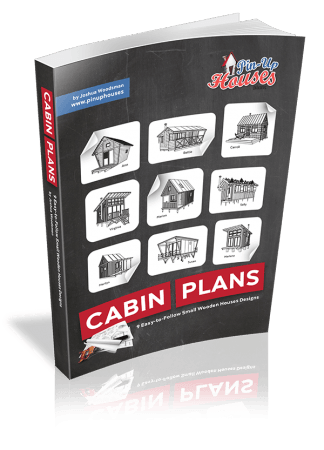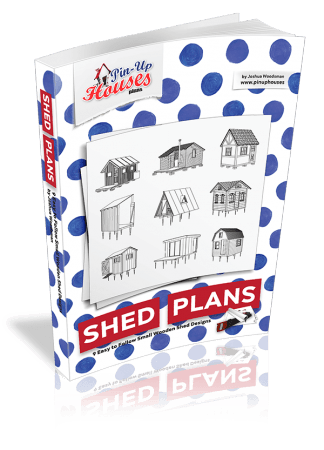Woodland environments naturally calm human consciousness and restore mental equilibrium disrupted by modern urban life. Scientific research demonstrates measurable physiological responses to forest imagery, including reduced cortisol levels, lowered blood pressure, and improved cognitive function. Interior forest murals harness these therapeutic benefits while providing year-round access to woodland tranquility.

Professional agencies like feelflow.space understand that forest wall treatments require sophisticated artistic knowledge combined with ecological awareness to achieve authentic results. Successful projects balance scientific accuracy with aesthetic appeal to create immersive environments that reflect personal connections to natural landscapes.
Contemporary homeowners recognize that authentic forest murals provide superior alternatives to manufactured nature imagery. Hand-painted woodland scenes adapt to specific architectural conditions while creating unique environments. Forest mural projects involve substantial planning and extended execution periods due to compositional complexity and technical demands, requiring premium materials for long-term stability.
The Modern Desire for Natural Sanctuary Spaces
Urban living environments often disconnect inhabitants from natural rhythms that historically influenced human well-being. Modern stress patterns create heightened needs for peaceful retreat areas within homes. Forest murals address this challenge by transforming interior rooms into tranquil woodland refuges.
The therapeutic concept of forest bathing has gained scientific validation through medical research demonstrating quantifiable health benefits from woodland exposure. Interior forest representations activate similar neurological responses while remaining accessible during all weather conditions and seasons.
The Evolution from Landscape Prints to Immersive Forest Experiences
Traditional woodland imagery relied on photographic reproductions that lacked dimensional depth and atmospheric complexity. Modern approaches prioritize three-dimensional effects and atmospheric perspective that technological advances in printing cannot replicate. The artistic process enables continuous refinement and adaptation throughout the creation phases.
Contemporary forest mural design has evolved beyond simple tree depictions to encompass complete ecosystem representations, including understory vegetation, forest floor elements, and wildlife integration. This comprehensive approach creates more believable woodland environments while providing educational opportunities about natural systems.
Psychological Benefits of Forest Imagery in Interior Design
Biophilic design principles recognize fundamental human needs for natural connections that persist despite urban lifestyle adaptations. Forest imagery satisfies these evolutionary requirements through visual stimulation that triggers positive neurological responses and stress reduction mechanisms.
Medical research reveals specific psychological advantages from regular exposure to forest imagery, including improved concentration, enhanced creativity, and reduced anxiety levels. These benefits accumulate through repeated viewing and become particularly pronounced in spaces used for rest, work, or contemplation. Color psychology studies demonstrate that natural forest palettes promote relaxation responses while earth tones and green hues reduce eye strain and mental fatigue.
Forest Symbolism Across Cultures and Traditions
Throughout human history, forests have represented sanctuary, mystery, and spiritual renewal across diverse cultural traditions. These symbolic associations enhance the psychological impact of interior forest murals by connecting occupants with archetypal meanings that transcend individual preferences.
European folklore traditions established forests as places of transformation and wisdom, while Asian philosophical traditions emphasize forests as places for meditation and spiritual practice. Indigenous cultures worldwide recognize forests as sacred spaces containing ancestral wisdom. The global environmental movement has elevated forests as symbols of ecological health that require protection, making interior forest imagery a daily reminder of natural beauty and environmental responsibility.
Forest Mural Style Variations and Artistic Approaches
Understanding different methodologies for depicting woodland environments enables homeowners to select approaches that complement architectural contexts and personal preferences. Each stylistic category creates distinct atmospheric effects while requiring specific technical skills and artistic training.
Photorealistic Forest Landscapes
Hyperrealistic woodland painting demands exceptional technical proficiency and comprehensive knowledge of forest ecosystems, botanical accuracy, and atmospheric physics. Artists must understand tree growth patterns, seasonal changes, light behavior, and ecological relationships that create believable woodland representations. Scientific accuracy extends beyond visual appearance to include appropriate species combinations, growth stages, and environmental contexts.
Accurate tree depiction requires understanding species-specific characteristics, including bark patterns, leaf shapes, growth habits, and seasonal variations. Branch architecture and tree structure follow species-specific patterns that influence overall forest composition and spatial organization. Convincing spatial depth depends on accurate application of atmospheric perspective principles, with color temperature progression from warm foreground tones to cool background hues mimicking natural atmospheric effects.
Seasonal Forest Variations and Timing
Spring forest representation captures renewal energy through fresh foliage, flowering trees, and vibrant ground cover plants. Summer forest scenes feature mature canopies and rich green color saturation that create cool, shaded environments. Autumn compositions showcase spectacular color transformations, while winter imagery emphasizes structural beauty through bare tree architecture and crisp atmospheric clarity.
Wildlife integration enhances authenticity and creates educational opportunities. Bird species selection must align with appropriate forest types and regional distributions to maintain ecological accuracy. Complete ecosystems demonstrate a comprehensive understanding while creating opportunities for close observation that particularly appeals to children and nature enthusiasts.
Impressionistic and Painterly Forest Interpretations
Impressionistic forest approaches prioritize atmospheric effects, color relationships, and emotional responses over precise botanical accuracy. This methodology offers creative flexibility while maintaining recognizable woodland themes that satisfy diverse aesthetic preferences. Painterly techniques emphasize visible brushwork and artistic interpretation that celebrate the hand-painting process.
Light and shadow play through forest canopies create dynamic lighting patterns that energize compositions while suggesting depth and natural beauty. Color harmony naturally provides harmonious combinations through related green hues, earth tones, and natural progressions. Texture and brushwork techniques for organic elements create tactile impressions and surface interest that enhance three-dimensional illusions.
Contemporary and Abstract Forest Concepts
Modern approaches reduce natural complexity to essential elements while maintaining woodland associations and natural beauty references. This philosophy aligns with contemporary interior design trends toward simplified forms and sophisticated restraint. Abstract forest interpretation requires exceptional artistic sensitivity to achieve impact through reduction rather than elaboration.

Geometric interpretation of tree forms reduces natural complexity to mathematical relationships that complement contemporary building design. Minimalist forest approaches emphasize essential woodland characteristics while eliminating decorative complexity. Monochromatic forest studies create sophisticated effects through value relationships and texture variations within limited palettes.
Room-Specific Forest Mural Applications
Different interior spaces benefit from tailored forest mural approaches that consider room function, lighting conditions, and intended atmospheric effects. Strategic application maximizes both aesthetic impact and functional benefits while ensuring appropriate scale and thematic integration.
Bedroom Retreats and Sleep Sanctuary Creation
Bedroom forest murals promote rest through calming woodland imagery that reduces stress and anxiety. Color selections emphasize cool, soothing tones that support circadian rhythms while avoiding stimulating elements that might interfere with sleep quality. Luxury master suites benefit from sophisticated forest treatments that create private sanctuaries for ultimate relaxation.
Guest bedroom forest murals create welcoming atmospheres with universal appeal and neutral compositions that work well for visitors from diverse backgrounds. Children’s bedroom forest murals combine aesthetic appeal with educational value through age-appropriate wildlife integration and interactive elements that encourage nature appreciation.
Living Areas and Social Forest Environments
Living room forest murals serve as conversation pieces and focal points that create welcoming atmospheres for gatherings. Scale and complexity must balance visual impact with conversational comfort, avoiding overwhelming effects that might dominate social interactions. Large living areas can accommodate dramatic forest murals that transform entire walls into woodland vistas.
Dining room forest murals enhance meal experiences through sophisticated natural imagery that creates pleasant backdrops for conversation. Library and study areas benefit from contemplative forest themes that promote concentration and intellectual pursuits while providing visual relief during extended periods of focused work.
Private Wellness and Meditation Areas
Wellness spaces benefit from therapeutic forest imagery that supports physical and mental health activities, including meditation, yoga, and stress reduction practices. Home office forest murals help reduce work-related stress while promoting productivity and creativity through natural imagery that counteracts artificial work environments.
Exercise room forest murals provide natural motivation and environmental enhancement for physical activities. Spa environments benefit from deeply therapeutic forest imagery that promotes healing, relaxation, and stress reduction through peaceful woodland scenes that create sanctuary atmospheres.
Forest Ecosystem Representation and Natural Authenticity
Professional forest murals benefit from understanding ecological principles and authentic woodland characteristics. This knowledge ensures believable representations that satisfy nature enthusiasts while providing educational value and environmental awareness opportunities.

Regional Forest Types and Geographic Authenticity
Selecting appropriate forest types for local climate and geography creates authentic representations that connect interior spaces with actual regional natural heritage. Deciduous forest representation requires an understanding of seasonal color changes and species-specific characteristics. Coniferous forest murals emphasize year-round foliage and distinctive needle-bearing tree characteristics. Tropical forest representation involves an understanding of complex layered canopy structures and diverse species compositions.
Seasonal Forest Cycles and Temporal Representation
Depicting forests through annual changes requires an understanding of natural timing patterns and species-specific responses to seasonal conditions. Spring woodland scenes emphasize renewal energy, while summer representations feature complete canopy development. Autumn displays create spectacular color opportunities, and winter imagery emphasizes structural beauty through dormant tree architecture.
Forest Floor and Understory Integration
Complete ecosystem representation includes ground layer vegetation, fallen organic matter, and geological features that create authentic forest environments. Understory plant communities vary significantly among forest types and include specialized vegetation adapted to forest conditions. Rock formations and geological features provide natural focal points while demonstrating environmental diversity.
Atmospheric Effects and Lighting in Forest Murals
Successful forest murals depend heavily on accurate representation of light behavior within woodland environments. Understanding optical principles enables artists to create convincing spatial illusions and atmospheric depth that transform flat walls into apparent woodland openings.
Natural Forest Lighting Patterns and Effects
Woodland lighting differs significantly from open landscape conditions due to canopy filtering and complex shadow patterns. Dappled sunlight through forest canopies creates dynamic patterns, while morning and evening illumination create dramatic opportunities for warm color emphasis. Overcast conditions create soft, even illumination suitable for calm, peaceful atmospheres.
Depth Creation Through Atmospheric Perspective
Optical principles governing distance perception enable artists to create convincing spatial illusions. Layered composition organization creates spatial depth through systematic treatment of foreground, middle ground, and background relationships. Color temperature shifts and detail reduction enhance depth illusion while preventing background elements from competing with foreground focal points.
Seasonal Light Quality and Forest Atmosphere
Light characteristics change significantly throughout annual cycles, creating distinctive seasonal atmospheric effects. Spring illumination features clean, energetic light quality, while summer canopy density creates deep shadows and cooling effects. Autumn lighting features warm color temperatures and dramatic illumination, and winter atmospheric clarity enables sharp definition and reflected light from snow surfaces.
Technical Execution and Professional Forest Mural Creation
Creating convincing forest murals requires specialized techniques, appropriate materials, and a comprehensive understanding of natural woodland characteristics. Professional execution ensures both aesthetic success and long-term durability while meeting sophisticated client expectations.
Surface Preparation for Large-Scale Forest Compositions
Foundation work becomes crucial for forest murals, where complex compositions require optimal surface conditions. Wall surface evaluation determines appropriate preparation methods, while primer selection specifically formulated for artistic applications provides superior paint adhesion and color development.
Professional Painting Methods for Forest Elements
Specialized techniques for woodland scene components require different approaches than standard decorative painting. Tree trunk and bark texture rendering requires understanding of species-specific characteristics and specialized techniques for creating convincing textural effects. Foliage representation requires balancing individual leaf accuracy with overall mass effects that create convincing forest atmospheres.
Color Theory and Forest Palette Development
Professional color approaches require an understanding of natural color relationships, seasonal variations, and atmospheric effects. Woodland environments display distinctive color harmonies through related green hues and earth tones that create naturally pleasing combinations. Interior lighting conditions affect forest mural appearance and require consideration during color development phases.
The Investment Value of Professional Forest Murals
Forest murals represent significant artistic investments that provide both immediate environmental enhancement and long-term property value benefits. Professional forest murals offer advantages over temporary decorating solutions through permanence, uniqueness, and appreciation potential.
Real Estate Impact and Market Appeal
Professional forest murals enhance property values through unique artistic features that distinguish homes in competitive markets. High-end residential markets increasingly value authentic natural themes that demonstrate environmental awareness and sophisticated aesthetic preferences. Forest themes appeal across diverse cultural backgrounds through universal appreciation for natural beauty.
Long-term Satisfaction and Lifestyle Enhancement
Personal benefits extend beyond initial installation through ongoing psychological advantages and lifestyle enhancement. Daily exposure to quality forest imagery provides cumulative benefits through stress reduction, environmental connection, and aesthetic pleasure. Year-round forest beauty offers a consistent natural connection despite seasonal weather limitations or geographic constraints.
Durability and Maintenance Advantages
Professional forest mural installations provide superior longevity compared to temporary decorating solutions while requiring minimal ongoing maintenance. Quality materials and professional execution ensure decades of service life, with fade resistance and damage resistance enabling minor repairs without complete replacement.
Regional Considerations and Local Forest Integration
Geographic location and local woodland characteristics significantly influence appropriate forest mural design decisions. Regional forest integration demonstrates environmental awareness and community connection while providing educational opportunities about local ecosystems and conservation needs.
Native Forest Recognition and Local Ecosystem Respect
Choosing forest types appropriate for regional geography creates authentic representations that connect interior spaces with actual local natural heritage. Indigenous plant integration creates authentic regional forest representations while providing educational opportunities about native ecosystems and conservation awareness.
Cultural Forest Traditions and Regional Heritage
Incorporating local forest history and cultural significance creates meaningful connections between interior art and community heritage. Traditional forest uses and recreational activities provide cultural themes that connect with regional heritage while demonstrating community history and environmental stewardship.



